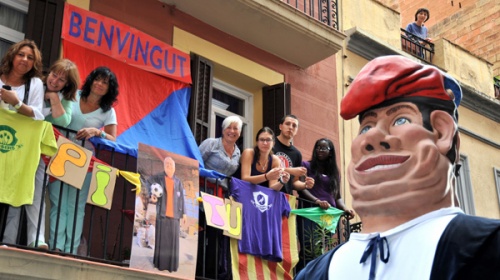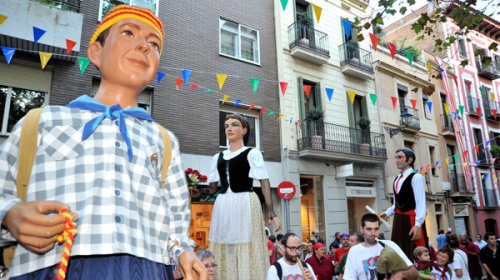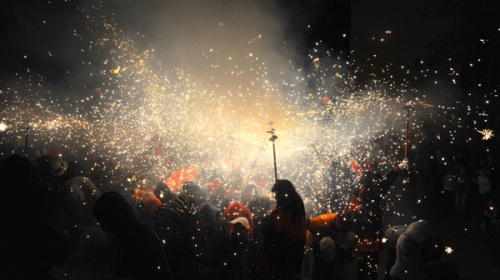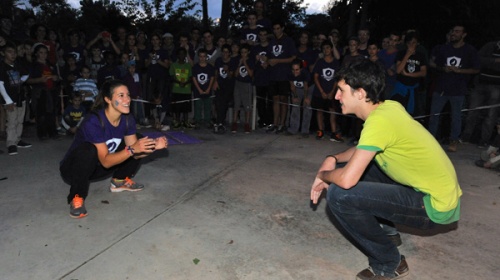Festa major de Sarrià
Activity dates
Dates de celebració
First fortnight in October, in the Sarrià-Sant Gervasi district's Sarrià neighbourhood
Feast Day: 7 October, Mare de Déu del Roser
Sarrià was the last town on the Barcelona plain to be annexed by the city. Unlike most – Sants, Gràcia, Sant Andreu – it was not incorporated by the royal decree of 1897 but managed to drag out the process until 1921. Today, the festa major in honour of the Mare de Déu del Roser is one of the events that allows the people of Sarrià to reaffirm their identity.
It is a participatory festival with lots of neighbourhood associations involved in its organisation through the festival committee, the Comissió de Festes del Roser de Sarrià. People take part on an individual basis too, by decorating their balconies and facades or organising the communal meals held in lots of the old town-centre streets. The neighbourhood's many schools join in as well and every year they organise a musical street procession, a cercavila, with traditional dances and festival figures: gegants, capgrossos and diables.
Reason
The cult of the Mare de Déu del Roser spread across Catalonia in the 16th and 17th centuries, through the consecration of chapels and small altars. In Sarrià's case, legend tells us it stemmed from the beautiful rose bushes that blossomed every spring in the dry beds of the streams that used to flow through the town.
Origins
The festival as we understand it today, run by the festival committee, dates from 1973.
Did you know...
Sabies que...
Sarrià's old giants are popularly known as the gegants de les dues cares because they each have two faces, representing two different characters. One side shows a bourgeois figure and the other a worker, two key figures in the development of the neighbourhood in the 19th century. They are the only ones like this in the city. But they are also unusual in other ways. When they were built in 1977, they were the biggest and heaviest giants in Barcelona.








